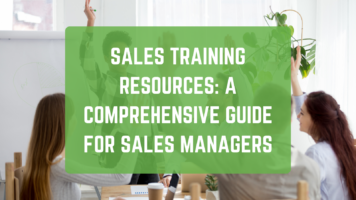In today’s fast-paced digital world SaaS, has emerged as a game-changer. In the past, software was a product that was purchased, delivered as a one-time license for use, and may be updated by a customer every few years (or less) as improvements were made in the software.
Now, SaaS allows companies to use data centers to host their software. All access, management, and use of the software then takes place over the internet. A SaaS business model typically has lower entry costs than traditional software and produces more effective and responsive software. It also saves clients from needing to purchase new hardware to maintain compatibility with new software versions.
What is SaaS Sales?
SaaS sales (also referred to as software as a service) is software purchased via a monthly or yearly subscription. Customers receive updates, improvements, and attentive support while their subscription is active. Once a client stops paying their recurring fee, they lose all access to the software product.
While this model generates a steady stream of revenue for SaaS sellers. However, this model requires a unique sales strategy to work well.
How Does SaaS Sales Differ From Other Sales?
Selling SaaS can come with its own set of challenges. B2B SaaS sales rely heavily on customer retention, service renewals, and current customers being upgraded to higher tiers of service. Other types of sales may seek to retain and upsell customers, however, it is particularly important in the subscription world of software. Attentive selling and onboarding processes are crucial to customers buying and using the SaaS product. If customer ‘training’ isn’t successful, customers are more likely to discontinue service with the SaaS seller. This turnover contributes to ‘churn’ in an SaaS business, a metric we’ll cover in the next section.
SaaS Sales Metrics
Along with following a unique sales process, essential SaaS sales metrics must be measured so that sales teams can effectively and efficiently increase their sales revenue, conversion rates, and retention.
Customer Acquisition Cost should be optimized in SaaS sales to reduce the investment required to convert a potential customer. When this cost is too high, companies should look at their qualification process in the sales cycle to ensure they are targeting leads that are the best fit for their services. Selling to the wrong customers is always a costly mistake. A trial period that is too long can also unnecessarily increase the cost of customer acquisition since the company must support a potential customer for free during this period. Paying attention to where time and effort are spent in the sales cycle is vital to reducing this cost.
Customer Lifetime Value is especially important in SaaS sales largely because of the higher customer acquisition cost associated with it. The total revenue a customer brings in for a company needs to offset the cost of the longer sales cycle and, of course, generate a profit over time.
Conversion Rates can signal a healthy or unhealthy sales process. When conversion rates are low and customer acquisition costs are high, this could point to issues with the qualification process, ineffective demos, or a sales team’s struggle with handling objections. When conversion rates are high, and customer acquisition costs are still high, this may highlight an opportunity for increased efficiency within the sales process. For example, improving demonstration skills could also improve conversion rates.
Monthly Recurring Revenue indicates the ongoing health of a SaaS seller’s business since each customer is intended to pay for their service on a recurring basis rather than paying for the product up front one time. This metric indicates how customer retention is going and whether customers are renewing at a satisfactory rate.
Monthly Active Users is a metric that shows how many people are engaging with the SaaS on a regular basis. While this number does not directly correspond to a sales or revenue number, it does show the current user engagement. SaaS companies should be tracking this metric and comparing it to their registered users to get a better understanding of how many customers are actually employing their software (and benefiting from it). By paying attention to this ratio and trends in it, companies can recognize opportunities to proactively address dips, increase customer engagement, and, in the end, improve customer retention.
Churn Rate is how many users cancel their service in a given time period. Companies that are tracking and optimizing for the metrics mentioned above will minimize their churn rate.
A Typical SaaS Commission Structure
Successful SaaS sales representatives are highly motivated, enjoy a long sales process, and are willing to dive deep into training in the pertinent software to develop their own expertise. They will have a mix of skills from the hunter, and farmer sales types. Because these sales representatives are expected to maintain their knowledge about the product they are selling and perform in complex sales scenarios, their base salary and the sales rep’s commission percentages are usually higher than those of representatives in other industries.
Base Pay in SaaS Sales
The most common types of commission structures in SaaS sales are base pay + commission (most models fall into this category) and a commission-only structure with no base pay at all. According to ZipRecruiter the average base salary for a SaaS sales representative is over $78,000. Glassdoor reports SaaS sales salaries in the $85,000-$150,000 range. Commissions vary from company to company, based on monthly recurring revenue or annual contract value.
Common Commission Structures
The Tiered Model
This model can inspire representatives to overachieve. The tiered model allows reps to increase their commission rate as they close more sales. Tiers are predetermined to motivate productivity.
The Accelerator Model
A form of the tiered sales model, in the accelerator model of commission, representatives are compensated for the sales they bring in above set goals and further compensated for exceeding their goals.
The Residual Model
This compensation structure rewards the sales representative who closed a deal both initially and over time. The representative is paid a commission on the sale itself and on every renewal, which typically happens every 1 to 5 years. The commission the representative receives may decrease as the years progress. This model emphasizes the unique nature of SaaS sales and the importance of keeping churn rates low and customer satisfaction high.
The Cover-Cost Model
Some companies choose not to pay commissions until a representative has made enough sales to cover their base pay and the cost of any job benefits. Commission rates after they’ve covered these costs tend to be double those in other models.
The Profit Based Model
In this less popular model, a company pays commission only when their sales team surpasses sales goals that are defined by a certain percentage of profit each quarter or year. This model is intended to keep sales representatives from offering discounts and drives more lucrative deals.
The Commission-Only Model
Skilled SaaS sales professionals will often look for opportunities to sell in a commission-only model. These driven salespeople are motivated by a nearly unlimited earning potential that depends solely on their ability to close sales.
Top Tips on How to Sell SaaS
Tip #1 Do Your Research on the Demographic You Serve
Understanding your ideal customer’s pain points before pitching is more important in SaaS sales than in any other industry. In the sales cycle, you’ll need to know how your SaaS uniquely solves the problem your customer is facing and be able to demonstrate exactly how it does this. Show, solve, and then serve.
Tip #2 Only Close the Right Deals
Not every SaaS solution is one size fits all; the solution you’re providing needs to help directly alleviate a customer’s specific pain points. Walking away from prospects that won’t benefit from your solution keeps your reputation clean. As well, this practice shows a level of sales maturity essential to your SaaS business’s long-term success. Since the SaaS sales cycle can be lengthy and expensive, sticking to the customers that are the best fit also positions you for the most powerful partnerships in business.
Tip #3 Establish Trust by Leveraging Case Studies and Data
Your demonstration and ability to customize your sales process to your customer will begin to build trust. However, customers will want more transparency about your company and evidence that you’re a reliable service provider. Leveraging references, case studies, and results data will demonstrate the ROI of your SaaS solution.
Tip #4 Get Strategic About Trial Periods
Most trials are between 7-30 days. Offering a trial period that is too long or too short can be detrimental to your sales process. A shorter trial will be expensive to support and can slow down a deal. A short trial period may not give potential customers enough time to explore your SaaS. This decision could leave customers with more questions than answers about how it will benefit them. Here are five questions to ask yourself to determine the length of a trial you should offer:
- How long do users need to get a basic understanding of your software?
- How long does it take users to begin to adopt and adapt to your software to determine if it is a good fit?
- How many service tiers do you offer, and how complex are your integrations? The more complexity, the more time and support customers will need in the trial period.
- What amount of exploration time allows users to gain familiarity?
- Do you take an enterprise approach to sales? This approach can indicate a longer trial.
- How many stakeholders in the customer’s company need to explore your software? The more stakeholders, the more time may be realistically required in a trial.
- Do you sell your SaaS with a self-service model? Self-service models typically need short trials to motivate sales.
Regardless of the length of your trial, remember to stay in touch and continue your sales process throughout.
Tip #5 Nurture Your Relationships for Retention
Converting a new client isn’t where the sales process ends in SaaS sales. The deal is just the beginning. Once your client is onboarding and early in their use of your SaaS, they need high-touch support that shows you genuinely care about their success. Done right, customer service will reinforce the confidence your customer has in your company. This relationship foundation sets you up for opportunities to upsell and cross-sell your customers down the road.
Ready to hire a top-notch SaaS sales team? We can help! Many of our sales professionals specialize in SaaS sales and can help your company gain and retain the perfect fit clients. Contact us today, and let’s explore your hiring needs.
relpost-thumb-wrapper
Related posts
close relpost-thumb-wrapper

Brent Thomson

Latest posts by Brent Thomson (see all)
- How to Hire Salespeople Outside Your Industry – December 20, 2023
- 10 Recruiter Skills You Can Leverage in Your Job Search – December 18, 2023
- How to Interview Sales Managers and Find Well-Rounded Talent – December 14, 2023




